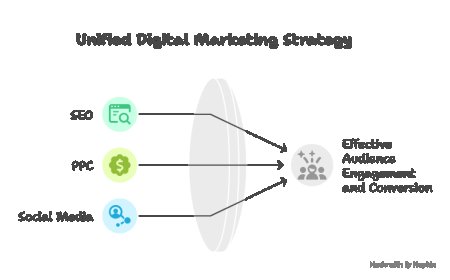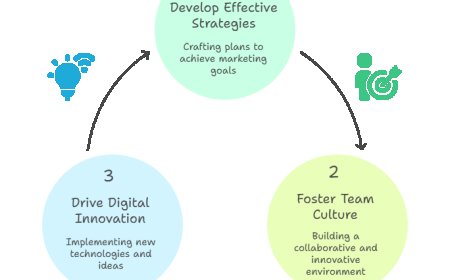7 Design Mistakes to Avoid in Your Next Mobile App UI
Avoid common UI pitfalls! Learn 7 design mistakes to skip for your next mobile app. A Mobile App Development Agency's guide to creating intuitive, user-friendly interfaces.
A beautifully designed mobile app is often the first impression a user gets, and in the crowded app marketplace, that first impression can make or break success. However, an aesthetically pleasing interface is only half the story; true excellence in mobile app UI design lies in its usability, intuitiveness, and ability to guide users effortlessly through their tasks. Many apps, despite having innovative features, fall short due to common UI mistakes that frustrate users and lead to uninstalls.
For a Mobile App Development Agency, understanding and meticulously avoiding these pitfalls is crucial. Its about more than just making something look good; its about crafting an experience that resonates with users, supports their goals, and ultimately drives engagement and retention. By prioritizing user needs and adhering to established design principles, you can ensure your next mobile app not only catches the eye but also holds user attention.
Here are 7 design mistakes to avoid in your next mobile app UI:
1. Over-Cluttered Interfaces and Information Overload
A screen packed with too many elements, text, or options overwhelms users and makes navigation daunting.
-
The Mistake: This happens when designers try to cram too much information or too many features onto a single screen, fearing users won't discover them otherwise. This leads to visual noise, increased cognitive load, and difficulty in identifying primary actions. Users feel lost, don't know where to focus their attention, and often abandon the app out of frustration. Common culprits include excessive banners, too many navigation options, or dense blocks of text without proper visual breaks.
-
How to Avoid It: Embrace minimalism. Prioritize clarity and focus. Each screen should ideally serve a single primary purpose. Use progressive disclosure, revealing information or options only when they are relevant or requested by the user. Utilize white space effectively to create visual breathing room. A Mobile App Development Agency should conduct content audits to ensure only essential information is presented at each stage of the user journey. Simplify navigation by using familiar patterns (like tab bars or bottom navigation) and grouping related items logically.
2. Inconsistent UI Elements and Branding
Lack of uniformity in design creates a disjointed and unprofessional user experience.
-
The Mistake: This error manifests as varying button styles, inconsistent typography across screens, a chaotic color palette, or icons that don't share a cohesive visual language. When UI elements behave or look differently from one screen to another, it confuses users and forces them to re-learn interactions. It also undermines brand identity, making the app feel less polished and trustworthy. Users develop mental models based on patterns; inconsistency breaks these models.
-
How to Avoid It: Develop and strictly adhere to a comprehensive design system or style guide. This document should outline all UI components, typography scales, color palettes, iconography styles, spacing rules, and interaction patterns. Ensure all designers and developers involved in the Mobile App Development Agency project reference and follow this guide meticulously. Consistency builds familiarity, reinforces brand identity, and reduces cognitive load, making the app intuitive and reliable.
3. Ignoring Platform-Specific Guidelines and Conventions
Failing to respect the native UX expectations of iOS (Human Interface Guidelines) or Android (Material Design).
-
The Mistake: Each major mobile operating system has its own established set of design guidelines, conventions, and user expectations. Designing an iOS app that looks and feels like an Android app (or vice versa) can feel alien and frustrating to native users. This includes differences in navigation patterns (e.g., back button behavior, tab bar placement), alert styles, system iconography, and even font rendering. Directly porting a design from one platform to another without adaptation is a common pitfall.
-
How to Avoid It: A Mobile App Development Agency must ensure its design team is well-versed in both Apple's Human Interface Guidelines (HIG) and Google's Material Design. While you can certainly inject your brand's unique personality, it's crucial to respect the underlying framework and established patterns that users are already familiar with on their respective devices. This reduces the learning curve and makes the app feel native and intuitive on each platform. Adapt your design to leverage platform-specific components where appropriate.
4. Poor Readability and Typography Choices
Text that is too small, uses low contrast, or employs inappropriate fonts makes content difficult to consume.
-
The Mistake: This covers several issues: using font sizes that are too small for comfortable reading, employing color combinations for text and background that lack sufficient contrast (e.g., light gray text on a white background), choosing decorative or overly stylized fonts for body copy, or insufficient line height and letter spacing. When text is hard to read, users quickly get fatigued or simply give up on consuming the content, regardless of its value.
-
How to Avoid It: Prioritize legibility. Use a minimum font size (e.g., 16pt for body text is a good starting point, with larger for headings). Ensure high contrast between text and background colors, following accessibility guidelines (e.g., WCAG 2.1 minimum contrast ratios). Select clear, readable typefaces for body copy, reserving more expressive fonts for headlines or specific branding elements. Provide ample line height (leading) and letter spacing (kerning) to prevent text from feeling cramped. For a Mobile App Development Agency, testing readability on various devices and lighting conditions is crucial.
5. Inadequate Visual Hierarchy and Lack of Focus
When everything on the screen screams for attention, nothing truly stands out.
-
The Mistake: Visual hierarchy is the arrangement of elements to show their order of importance. A mistake here means that primary actions, important information, or call-to-action (CTA) buttons don't stand out. Users struggle to identify what they should look at first or what action they should take next. This can lead to missed conversions, confusion, and frustration. It's often a result of using uniform sizes, colors, and weights for all elements, making the interface a flat, undifferentiated landscape.
-
How to Avoid It: Use size, color, contrast, typography (weight, style), spacing, and position to guide the user's eye. Make the most important elements the most prominent. For instance, a primary CTA button should have a distinct color, larger size, and clear label compared to secondary actions. Group related information visually using proximity and alignment. A skilled Mobile App Development Agency understands that a clear visual hierarchy directs user attention, simplifies decision-making, and improves the overall efficiency of interaction.
6. Insufficient or Misused White Space (Negative Space)
Cramming elements together without adequate breathing room makes interfaces feel busy and claustrophobic.
-
The Mistake: White space (or negative space) is the empty area between and around elements on a page. The mistake is not utilizing this space effectively, leading to designs that feel cluttered, difficult to scan, and visually overwhelming. While it's called "white" space, it doesn't have to be white; it's simply the absence of content, allowing elements to stand out. When ignored, elements bleed into one another, making it hard to distinguish separate components or content blocks.
-
How to Avoid It: Embrace white space as a powerful design tool. Use it to separate distinct sections, group related items, and draw attention to critical elements. Generous padding around text blocks, spacing between buttons, and margins around screen edges all contribute to a cleaner, more readable, and aesthetically pleasing interface. A well-designed UI, often crafted by an experienced Mobile App Development Agency, uses white space to enhance focus, improve readability, and create a sense of order and elegance. It allows content to breathe and reduces visual clutter.
7. Ignoring Accessibility Standards
Designing for an "average" user and neglecting the needs of individuals with disabilities.
-
The Mistake: This involves using low color contrast that affects users with color blindness or low vision, relying solely on color to convey information, making touch targets too small for users with motor impairments, failing to provide adequate support for screen readers, or not allowing text resizing. Ignoring accessibility excludes a significant portion of potential users and can also lead to legal repercussions. It creates a frustrating, exclusionary experience for many.
-
How to Avoid It: Integrate accessibility into the entire design and development process, rather than treating it as an afterthought. Follow guidelines like WCAG (Web Content Accessibility Guidelines) which apply to mobile as well. Ensure sufficient color contrast, provide clear alt-text for images, make sure all interactive elements are large enough for easy tapping (e.g., 44x44 points/pixels minimum for touch targets), support dynamic type for text resizing, and ensure logical tab order for screen reader navigation. A responsible Mobile App Development Agency understands that accessible design benefits everyone, creating a more inclusive and user-friendly experience for all.
In conclusion, stellar mobile app UI design is not just about visual appeal; it's about thoughtful planning, user empathy, and meticulous execution. By consciously avoiding these 7 common design mistakes from decluttering interfaces and ensuring consistency to prioritizing readability, leveraging white space, respecting platform conventions, and championing accessibility a Mobile App Development Agency can create an app that not only looks great but also delivers an intuitive, efficient, and delightful experience for all users. This commitment to user-centric design will ultimately lead to higher engagement, better retention, and sustained app success.






















